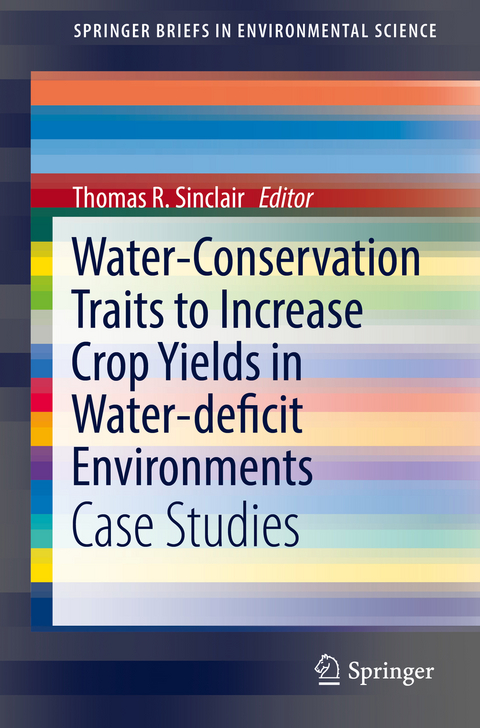
Water-Conservation Traits to Increase Crop Yields in Water-deficit Environments
Case Studies
Seiten
2017
|
1st ed. 2017
Springer International Publishing (Verlag)
978-3-319-56320-6 (ISBN)
Springer International Publishing (Verlag)
978-3-319-56320-6 (ISBN)
This volume explores specific approaches that have shown to result in crop yield increases. Research on the physiological understanding of these methods has led to the development of practical applications of plant breeding approaches to genetically improve crops to achieve higher yields. Authoritative entries from crop scientists shed new light on two water-conservation traits: one that is based on an initiation of the decrease in transpiration earlier in the soil drying cycle, and the second that is based on a sensitivity of transpiration rate under high atmospheric vapor pressure deficit that results in partial stomatal closure. Both these approaches involve partial stomatal closure under well-defined situations to decrease the rate of soil water loss.
Readers will be able to analyze the circumstances under which a benefit is achieved as a result of the water-limitation trait; and key discussion points in the case studies presented willhelp answer questions such as what species, which environments, how often will yield be benefited for various crop species? Contributions also review the genetic variation for these two traits within each crop species and the physiological basis for the expression of these traits.
Readers will be able to analyze the circumstances under which a benefit is achieved as a result of the water-limitation trait; and key discussion points in the case studies presented willhelp answer questions such as what species, which environments, how often will yield be benefited for various crop species? Contributions also review the genetic variation for these two traits within each crop species and the physiological basis for the expression of these traits.
Dr. Thomas R. Sinclair is an adjunct professor in crop science at North Carolina State University. His research focuses on the interactions between plant physiology and the environment to determine crop yields. He is currently investigating plant traits that may increase drought tolerance.
Chapter1. Introduction.- Chapter2. Early Partial Stomata Closure with Soil Drying.- Chapter3. Limited-Transpiration Rate Under Elevated Atmospheric Vapor Pressure Deficit.- Chapter4. Soybean.- Chapter5. Peanut.- Chapter6. Chickpea.- Chapter7. Lentil.- Chapter8. Maize.- Chapter9. Sorghum.- Chapter10. Pearl Millet.- Chapter11. Wheat.
| Erscheinungsdatum | 03.06.2017 |
|---|---|
| Reihe/Serie | SpringerBriefs in Environmental Science |
| Zusatzinfo | X, 95 p. 25 illus., 4 illus. in color. |
| Verlagsort | Cham |
| Sprache | englisch |
| Maße | 155 x 235 mm |
| Gewicht | 180 g |
| Themenwelt | Naturwissenschaften ► Biologie ► Ökologie / Naturschutz |
| Naturwissenschaften ► Geowissenschaften ► Geologie | |
| Schlagworte | agricultural science • Agriculture • Aquaporin populations • Botany & plant sciences • Botany & plant sciences • cell physiology • cellular biology (cytology) • Crop genotype trait expression • Crop performance under drought • Earth and Environmental Science • Environmental management, • Environmental Management • Hydraulic Conductance • Hydrology & the hydrosphere • Hydrology & the hydrosphere • Hydrology/Water Resources • Partial stomatal closure • Plant sciences • Sedimentology & pedology • Sedimentology & pedology • Soil drying cycle • Soil Science & Conservation • Soil Science & Conservation • soybean, peanut, chickpea • The Environment • Transpiration • Vapor pressure deficit • Water conservation traits • Water-deficit environments • Water-limitation traits |
| ISBN-10 | 3-319-56320-3 / 3319563203 |
| ISBN-13 | 978-3-319-56320-6 / 9783319563206 |
| Zustand | Neuware |
| Haben Sie eine Frage zum Produkt? |
Mehr entdecken
aus dem Bereich
aus dem Bereich


